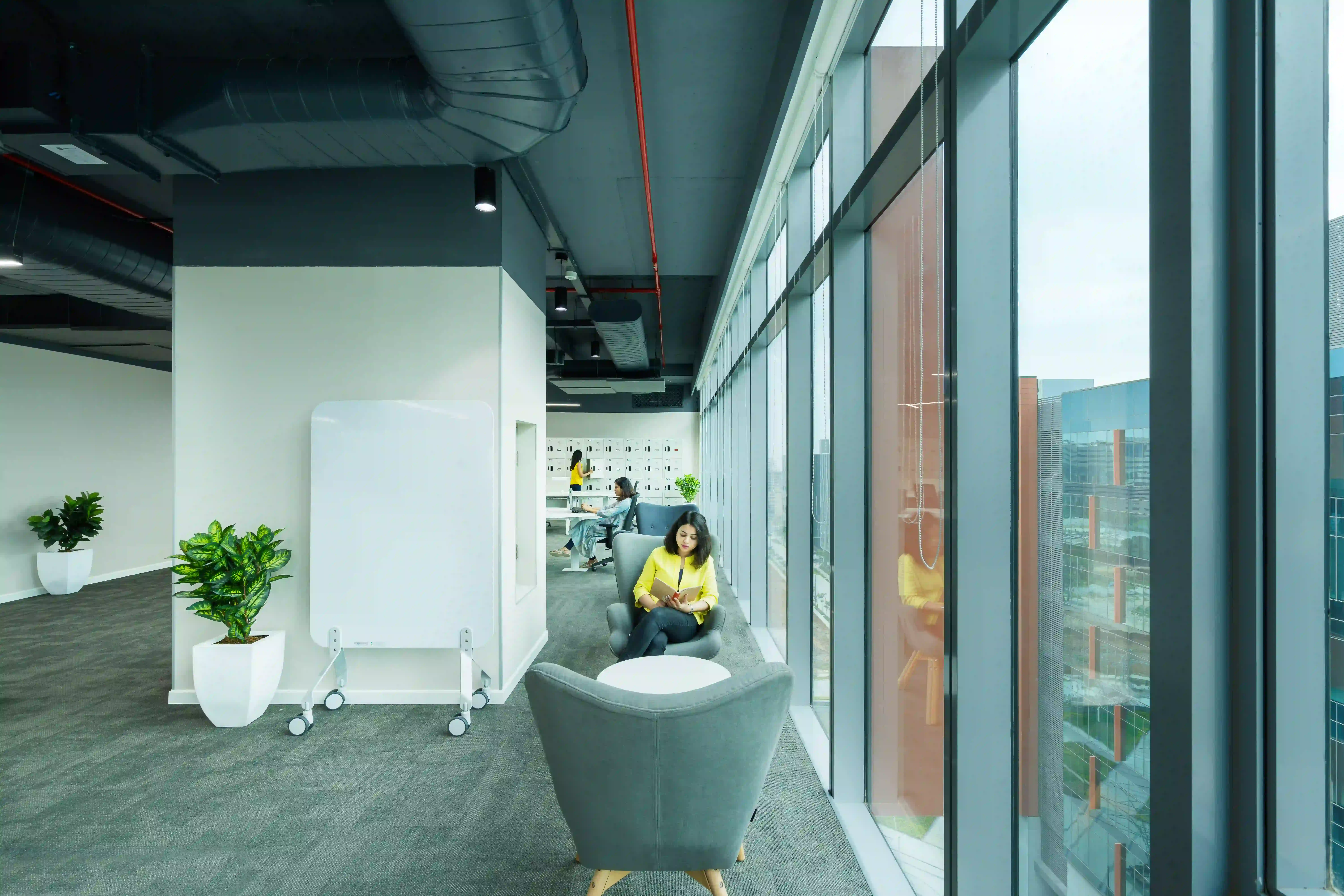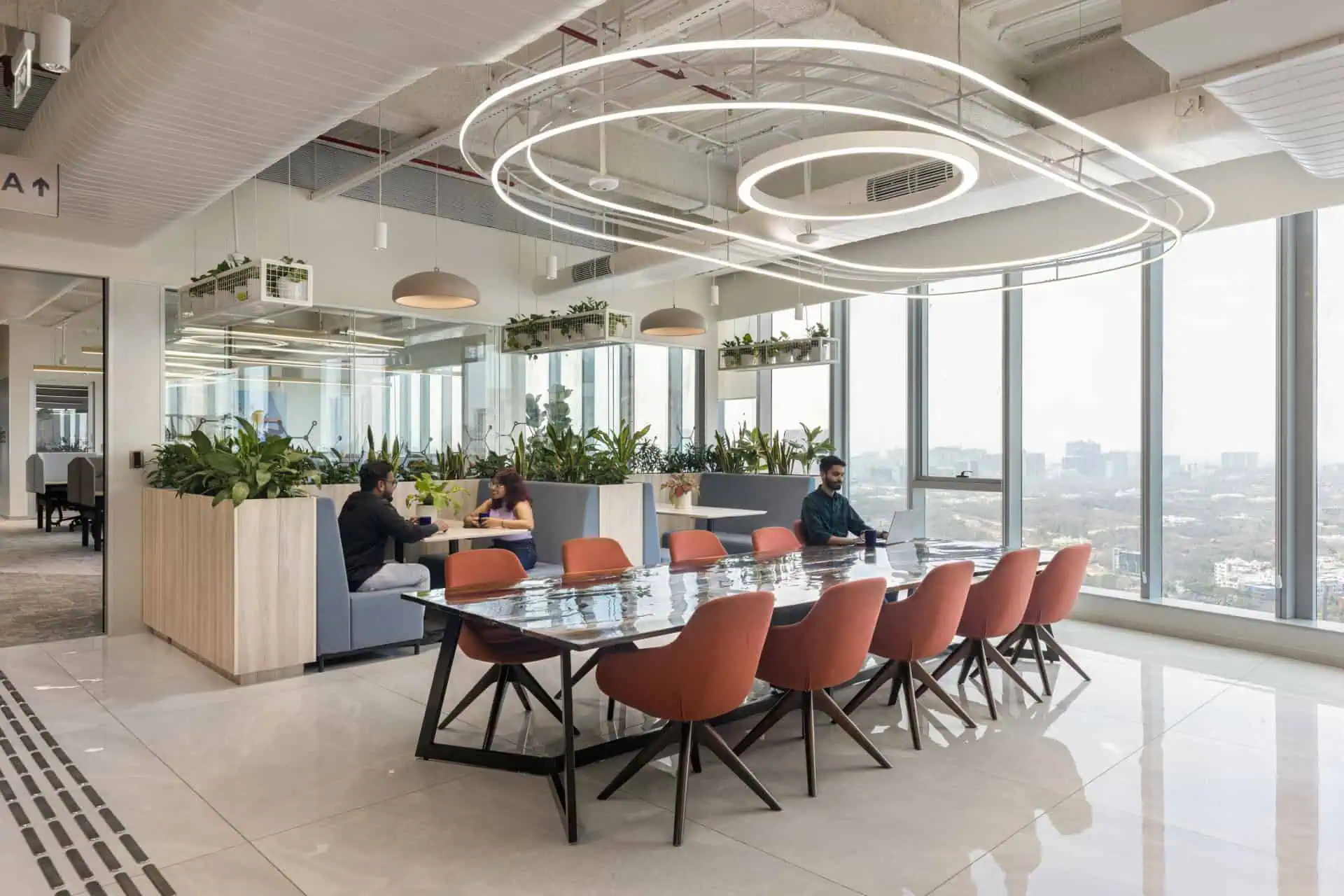Have you ever found yourself bundled up in multiple layers just to survive the frigid air conditioning at the office? It’s a common scenario, and in the pursuit of the perfect indoor climate, someone often ends up sacrificing their comfort.
Undoubtedly, there are no ‘one-size-fits-all’ universal standards or ‘recommended comfort ranges’ when it comes to designing thermally comfortable workplaces. This is why, if we were to succinctly define ‘thermal comfort,’ it would be the creation of building systems that adapt harmoniously to the local environment and the intended functions of the space.
Spatial Experience & Thermal Comfort
Spatial experience and thermal comfort are intertwined; combining them results in a workspace that not only meets employees’ physical needs but elevates their experience, fostering inspiration and boosting both professional and personal lives.
Therefore, providing employees with a thermally comfortable workspace yields multiple benefits. Comfortable employees are more engaged, creative, and collaborative, ultimately enhancing productivity.
Effects of Thermal Discomfort
Thermal discomfort in the workplace has diverse, detrimental effects:
- Reduced Productivity: Hindered focus and slower task completion.
- Increased Absenteeism: Higher sick leave rates and understaffing.
- Health Issues: Cold and hot environments lead to various health problems.
- Emotional Distress: Frustration, irritability, and negative atmosphere.
- Decreased Job Satisfaction: Employee dissatisfaction and low morale.
- Strain on HVAC Systems: Overworked systems result in maintenance costs.
- Disengagement: Poor thermal comfort creates a poor impression for employees and clients.
- Reduced Employee Retention: High turnover and talent loss, escalating costs. Addressing thermal comfort is essential for a productive, harmonious workplace.
WELL Building Standards for Workplace Design
The WELL Thermal Comfort concept is designed to enhance productivity and ensure maximum comfort for building occupants by focusing on HVAC system improvements and accommodating individual thermal preferences. It focuses on maintaining temperature within a comfort range, encouraging individual control, and conducting thermal comfort surveys. The standard addresses air quality, glare control, humidity control, and the use of radiant heating and cooling. It also emphasizes operable windows for natural ventilation, effective daylighting, and a well-designed building envelope. By adhering to these guidelines, organizations can create workspaces that prioritize employee well-being, leading to increased productivity and satisfaction, while also promoting energy efficiency and sustainability.
Moreover, the WELL Thermal Comfort concept employs research-based interventions to address individual discomfort, promoting health, well-being, and productivity in building design.

Passive Design Techniques for Improving Thermal Comfort
Zoning for Temperature Control
Zoning the workplace for temperature control is a strategy that leverages data and technology to provide personalized comfort. By employing sensors that continuously monitor temperature and occupancy, data can be collected to analyze where and when adjustments are needed. This data-driven approach enables the creation of zones within the workspace, each with its temperature controls. Employees can then customize their immediate environment based on their preferences. The data collected helps in optimizing energy use and ensuring that comfort levels are maintained efficiently.
Natural Ventilation

Integrating operable windows, balconies, or terraces is not just about allowing fresh air but also utilizing data to optimize the ventilation process. Sensors and data analysis play a critical role in monitoring indoor and outdoor conditions. Data on temperature, humidity, and air quality can inform when and how windows should be opened or closed to ensure a continuous supply of fresh air. This approach enhances not only thermal comfort but also indoor air quality, creating an ideal working environment based on real-time data.
Thermal Mass
Utilizing materials with high thermal mass, such as concrete and stone, contributes significantly to thermal comfort. Data analysis can help optimize the use of these materials. By monitoring indoor and outdoor temperatures, data can inform when these materials should absorb or release heat to maintain stable indoor conditions. This data-driven strategy ensures that thermal mass is used efficiently to stabilize temperatures without unnecessary energy consumption.
Insulation and Glazing
Proper insulation and high-performance glazing are fundamental to maintaining a stable indoor temperature. Data can play a vital role in assessing the effectiveness of insulation and glazing systems. Sensors and data analytics can track heat loss or gain through the building envelope and provide insights into where improvements are needed. This data-backed approach ensures that insulation and glazing are optimized for energy efficiency while maintaining thermal comfort.
Advanced HVAC Systems
Advanced HVAC systems are the cornerstone of maintaining thermal comfort and energy efficiency in the workplace. These intelligent systems incorporate sensors and automation, enabling real-time adjustments in response to changing environmental conditions. Precision zoning ensures that different areas of the workspace can have individualized temperature control, meeting specific comfort needs without affecting others. Energy efficiency is a prime benefit, with the systems optimizing output to conserve energy during mild conditions or periods of low occupancy.
In Conclusion
The effects of thermal discomfort in the workplace encompass not only the physical health and well-being of employees but also the overall productivity, morale, and financial health of the organization. To mitigate these negative effects, organizations must prioritize and invest in maintaining a comfortable and consistent temperature in the workplace. Doing so not only benefits employees but also contributes to a more productive and harmonious work environment.
Realted Reads:
How To Achieve Employee Well-being with Spectacular Indoor Air Quality?





